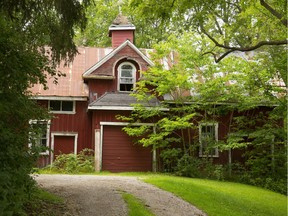London heritage districts: Up to 14 newcomers could be added
City hall has a new heritage preservation plan that will see more than a dozen neighbourhoods investigated for their heritage value, a move that advocates hope will help protect historic buildings.

Article content
Move over, Blackfriars. Make room, Woodfield.
There’s not one, but 14 possible new kids on London’s heritage block.
City hall has a new heritage preservation plan that will see more than a dozen neighbourhoods investigated for their heritage value, a move that advocates hope will help protect historic buildings.
It will likely take years — decades, even — to study all 14 areas and weigh their characteristics to see if a heritage conservation district label is warranted.
But the long-term plan is a proactive move in the eyes of London’s Architectural Conservancy of Ontario branch.
“The more HCDs (heritage conservation districts) that we have, the more chance there is of being able to prevent demolition of important buildings,” president Jennifer Grainger said.
The organization has warned of “demolition by neglect,” the loss of historic landmarks not by the wrecking ball — but from a lack of attention and care that allows them to fall into disrepair.
“At the very least, it means they’re doing studies in the area and checking to see what heritage properties there are. That, in itself, is a wonderful thing,” Grainger said.
It also makes more sense to blanket a historic area with the heritage label instead of simply protecting a building here and a building there, so experts prefer the neighbourhood approach.
London’s new plan — dubbed Heritage Places 2.0 — starts with a study of North Talbot and ends with Pond Mills. Not all the areas boast stately old mansions or high-priced properties that some Londoners associate with the existing heritage districts.
Seven London neighbourhoods are already deemed heritage conservation districts. Within those zones, there are 3,700 properties.
Only two Ontario cities – Toronto and Ottawa – have more heritage-designated areas.
Politicians on city council’s planning committee unanimously backed the plan, which goes to council at the end of the month. If approved, staff can begin studying.
City planner John Fleming calls the approach a new heritage “playbook” that will help Londoners get a sense of when their own neighbourhood will be up for study.
There’s been a significant shift in the way people think about those heritage districts over the last 20 years, he said.
“They were concerned that heritage conservation district designations would come with stringent rules that would preclude them from making changes to their homes. Some even worried that they would be restricted in selecting a colour to paint their home,” Fleming said.
Owners can still make changes to homes or other buildings in a heritage district, as long as the special characteristics aren’t lost.
City hall offers heritage alteration permits, and Fleming said the process has recently been “streamlined.”

These days, people are lining up to get their neighbourhoods on the official roster of heritage districts.
“I do get the feeling that a lot of residents in older neighbourhoods are realizing that we’ve lost a lot, and that a lot of buildings have had unsympathetic changes — new windows, strange-looking additions,” Grainger said.
“Maybe, people are more positive about the conservation districts, and there will be less arguments about these going forward.”
The problem is that those studies and plans take time, money and staff, and council can’t keep up with the demand.
That’s why the new plan outlines the order in which the 14 neighbourhoods will be studied.
Grainger said she’s happy to see North Talbot — bounded by Oxford, Richmond and Fullarton streets and the Thames River — top the list, because it has many heritage buildings that aren’t in great shape.
The report prepared by city staff sums up the potential opportunity for the new heritage areas: “Cultural heritage is an important community resource. It is a source of knowledge and memory. It contributes to the quality of life of a community. It is a collective legacy.”
THE NEIGHBOURHOODS
In order of priority:
- North Talbot
- SoHo
- Smokestack District
- Stanley-Becher-Riverforks
- Old East Village
- Piccadilly
- Old South II
- Old North
- Orchard Park-Sherwood Forest
- Lambeth
- Hamilton Road
- Braemar Crescent
- Hall’s Mills
- Pond Mills







Postmedia is committed to maintaining a lively but civil forum for discussion. Please keep comments relevant and respectful. Comments may take up to an hour to appear on the site. You will receive an email if there is a reply to your comment, an update to a thread you follow or if a user you follow comments. Visit our Community Guidelines for more information.